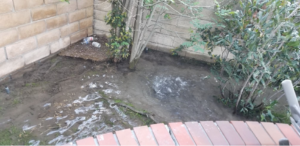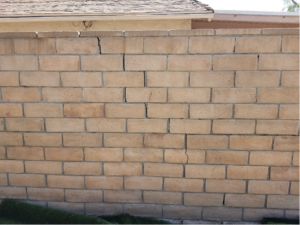 Most of us in Southern California, even during periods of drought, generally take it for granted that when we turn on the tap the water flows. Our reliable municipal network of ground and surface water resources, water treatment plants, pumps and pipes is generally an invisible world until the water temporarily stops flowing—usually due to a planned maintenance outage or a surprise prolonged power outage or a line or pump problem.
Most of us in Southern California, even during periods of drought, generally take it for granted that when we turn on the tap the water flows. Our reliable municipal network of ground and surface water resources, water treatment plants, pumps and pipes is generally an invisible world until the water temporarily stops flowing—usually due to a planned maintenance outage or a surprise prolonged power outage or a line or pump problem.Unfortunately, some people have had the opposite experience and it’s becoming more common as our infrastructure ages in the Golden state:
What happens when a city installed pipe bursts below the ground on your property?
Well, the only way to describe it is, “That’s a gusher!” Most of us would never see such a disaster coming, but it does happen from time to time due to earthquakes, corrosion, construction and other maintenance or operational issues.
Part of our client’s property in Simi Valley was flooded when a city water line broke on the property. The back and side yards of the home were inundated with several inches of flowing water on February 18, 2019 from the city’s broken pipe. In these situations, everyone is usually very cooperative until the water is shut-off and the homeowner calls the insurance company, the repair contractors or the family attorney.
The Damages—More Than Meets the Eye
 That’s when it’s helpful to know a good structural engineer or how to find one. A report prepared shortly after the leak occurred, estimated that approximately 28,500 gallons of water flowed onto the property for approximately 2.5 hours. Some of the water flowed south below the property line wall and down a common area slope. This was no small leak and exceeds the amount of water of water in a smaller family swimming pool by a factor of two plus.
That’s when it’s helpful to know a good structural engineer or how to find one. A report prepared shortly after the leak occurred, estimated that approximately 28,500 gallons of water flowed onto the property for approximately 2.5 hours. Some of the water flowed south below the property line wall and down a common area slope. This was no small leak and exceeds the amount of water of water in a smaller family swimming pool by a factor of two plus.Damage to our client’s property was extensive and consisted of tilting of the pool, movement of the backyard patio concrete, and movement of the house foundations and slabs. Our scope of work consisted of reviewing photographs and measurements that were taken soon after the flood, and then comparing that information to the conditions that were present more than 18 months after the incident.
Necessary Property Repairs
 Our analyses and measurements confirmed that the pool, the patios, and the house had experienced damage and movement caused by wetting of expansive soils that underlie the property. The expansive soils lifted the improvements by up to about 2 inches. No significant movement of the property had occurred since the initial measurements that were obtained in March, 2019. However, the house tilted an additional 0.25 inches between March, 2019, and August, 2020. In these situations, settling can be a gradual process over an indeterminate length of time that poses a continual problem and additional damage.
Our analyses and measurements confirmed that the pool, the patios, and the house had experienced damage and movement caused by wetting of expansive soils that underlie the property. The expansive soils lifted the improvements by up to about 2 inches. No significant movement of the property had occurred since the initial measurements that were obtained in March, 2019. However, the house tilted an additional 0.25 inches between March, 2019, and August, 2020. In these situations, settling can be a gradual process over an indeterminate length of time that poses a continual problem and additional damage.The Analysis
Our analyses of the conditions provided technical support to the construction consultant’s structural repair recommendations, consisting of:
- Stabilize the soils that support the pool
- Remove and replace the damaged flatwork, and install a new surface drainage system
- Underpin and stabilize the house foundations and slabs
Conclusions—Invisible Damage
While you can’t be prepared for every surprise or disaster in life, it is helpful as a homeowner to know that in these types of situations that the repair process can be complex, require the services of multiple experts and can take a significant amount of time. If you should ever find yourself in a similar situation, don’t quickly skip past the need for a structural engineering inspection of the property and assessment of the damages. Helfrich Associates can help!
Just like you can’t see those pipes corroding underground, the surface level damage to a pool, patio, block wall or a home’s pad or foundation visible to the naked eye might not tell you the whole story. Oh yes, you can see the tilting and cracked surfaces, but how do you know if there are voids or other issues with the soil below? In these cases, it generally makes good sense to get a structural engineer involved so the repairs are done completely and right the first time.
